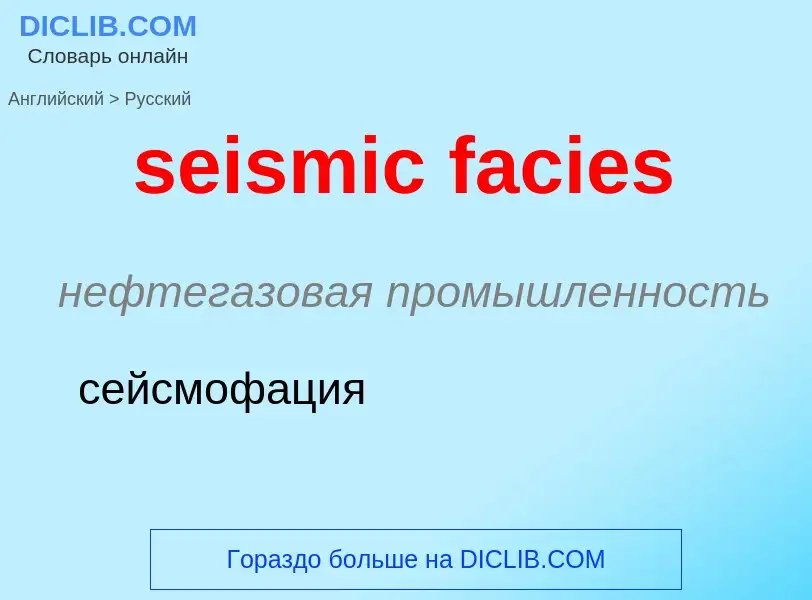Translation and analysis of words by ChatGPT artificial intelligence
On this page you can get a detailed analysis of a word or phrase, produced by the best artificial intelligence technology to date:
- how the word is used
- frequency of use
- it is used more often in oral or written speech
- word translation options
- usage examples (several phrases with translation)
- etymology
seismic facies - translation to russian
нефтегазовая промышленность
сейсмофация
[baiə(u)'feiʃii:z]
геология
биофация
ассоциация или подразделение по характеру органических остатков
существительное
геология
биофация
ассоциация или подразделение по характеру органических остатков
['feiʃii:z]
общая лексика
фация (1. часть ассоциации, отличающаяся по доминанте 2. серийное сообщество, развивающееся в направлении фациации)
медицина
лицо
Смотрите также
существительное
зоология
внешний вид
общий облик
ботаника
характеристика растительного сообщества
ценоза
геология
фация
Definition
Wikipedia

Seismic analysis is a subset of structural analysis and is the calculation of the response of a building (or nonbuilding) structure to earthquakes. It is part of the process of structural design, earthquake engineering or structural assessment and retrofit (see structural engineering) in regions where earthquakes are prevalent.
As seen in the figure, a building has the potential to 'wave' back and forth during an earthquake (or even a severe wind storm). This is called the 'fundamental mode', and is the lowest frequency of building response. Most buildings, however, have higher modes of response, which are uniquely activated during earthquakes. The figure just shows the second mode, but there are higher 'shimmy' (abnormal vibration) modes. Nevertheless, the first and second modes tend to cause the most damage in most cases.
The earliest provisions for seismic resistance were the requirement to design for a lateral force equal to a proportion of the building weight (applied at each floor level). This approach was adopted in the appendix of the 1927 Uniform Building Code (UBC), which was used on the west coast of the United States. It later became clear that the dynamic properties of the structure affected the loads generated during an earthquake. In the Los Angeles County Building Code of 1943 a provision to vary the load based on the number of floor levels was adopted (based on research carried out at Caltech in collaboration with Stanford University and the U.S. Coast and Geodetic Survey, which started in 1937). The concept of "response spectra" was developed in the 1930s, but it wasn't until 1952 that a joint committee of the San Francisco Section of the ASCE and the Structural Engineers Association of Northern California (SEAONC) proposed using the building period (the inverse of the frequency) to determine lateral forces.
The University of California, Berkeley was an early base for computer-based seismic analysis of structures, led by Professor Ray Clough (who coined the term finite element. Students included Ed Wilson, who went on to write the program SAP in 1970, an early "finite element analysis" program.
Earthquake engineering has developed a lot since the early days, and some of the more complex designs now use special earthquake protective elements either just in the foundation (base isolation) or distributed throughout the structure. Analyzing these types of structures requires specialized explicit finite element computer code, which divides time into very small slices and models the actual physics, much like common video games often have "physics engines". Very large and complex buildings can be modeled in this way (such as the Osaka International Convention Center).
Structural analysis methods can be divided into the following five categories.


